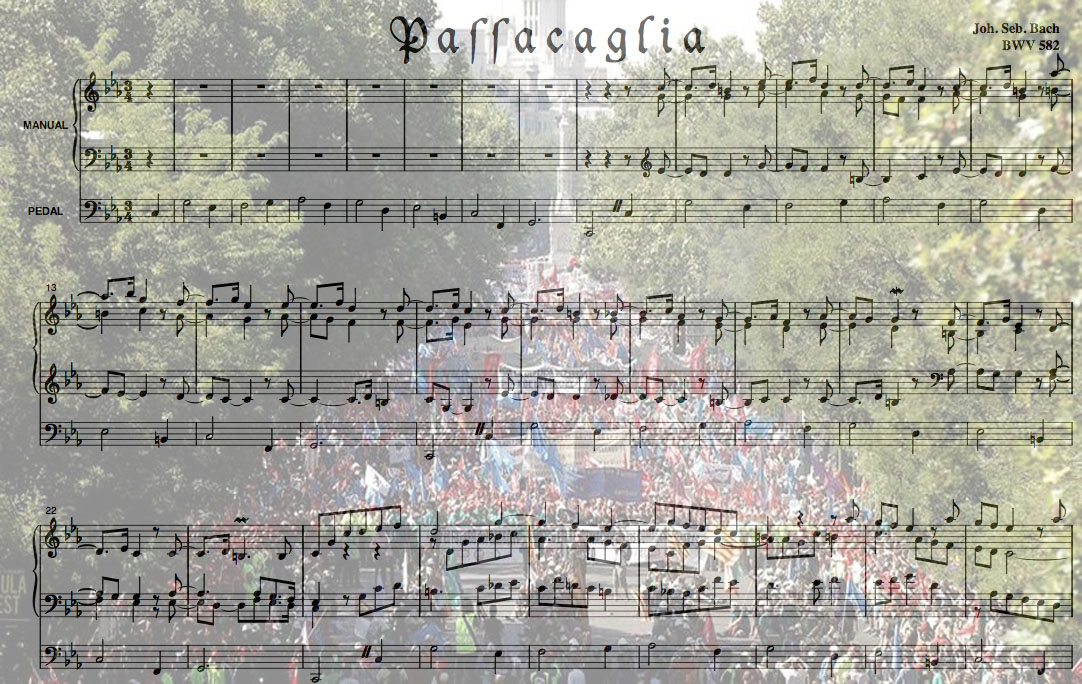Mixturas #1 – J. S. Bach, Passacaglia BWV582 & 2012-7-11, Marcha negra (Madrid)
Plantilla: órgano y electrónica en vivo o pregrabada
Creación: febrero-marzo 2014
Estreno: 10 marzo 2014. CCAI Gijón y órgano de la basílica de Covadonga, FERNANDO ÁLVAREZ

La serie mixturas parte de la idea de superponer dos realidades completamente dispares sobre el mismo discurso sonoro, reflejando así la doble acepción de la palabra: como sinónimo de mezcla, de amalgama, y como recurso típico del órgano en el que la superposición de varios registros da lugar a un nuevo timbre.
Desde el punto de vista técnico, estas piezas están también planteadas como estudios sobre síntesis concatenativa. Se trata, ésta, de una reciente técnica mediante la cual se ponen en relación dos flujos sonoros independientes. Uno de ellos (corpus) es segmentado en una gran cantidad de pequeños fragmentos, que son disparados según su proximidad acústica con el otro flujo sonoro (target), reproducido de forma continua. De esta manera se crea una especie de mosaico sonoro en el que se construye una entidad sonora a través de pequeños fragmentos de otro mundo y contexto sonoro completamente diferente.
En esta primera obra de la serie, la Passacaglia en Dom de Bach es superpuesta a una grabación de campo tomada al final de la llamada «marcha negra», que reunió en Madrid a miles de mineros venidos de toda España. La idea original de la passacaglia – su característico repetitivismo y su origen en la propia calle (pasacalle)- es mixturada y recontextualizada, constituyéndose así en una especie de passacaglia dentro de otra passacaglia.

